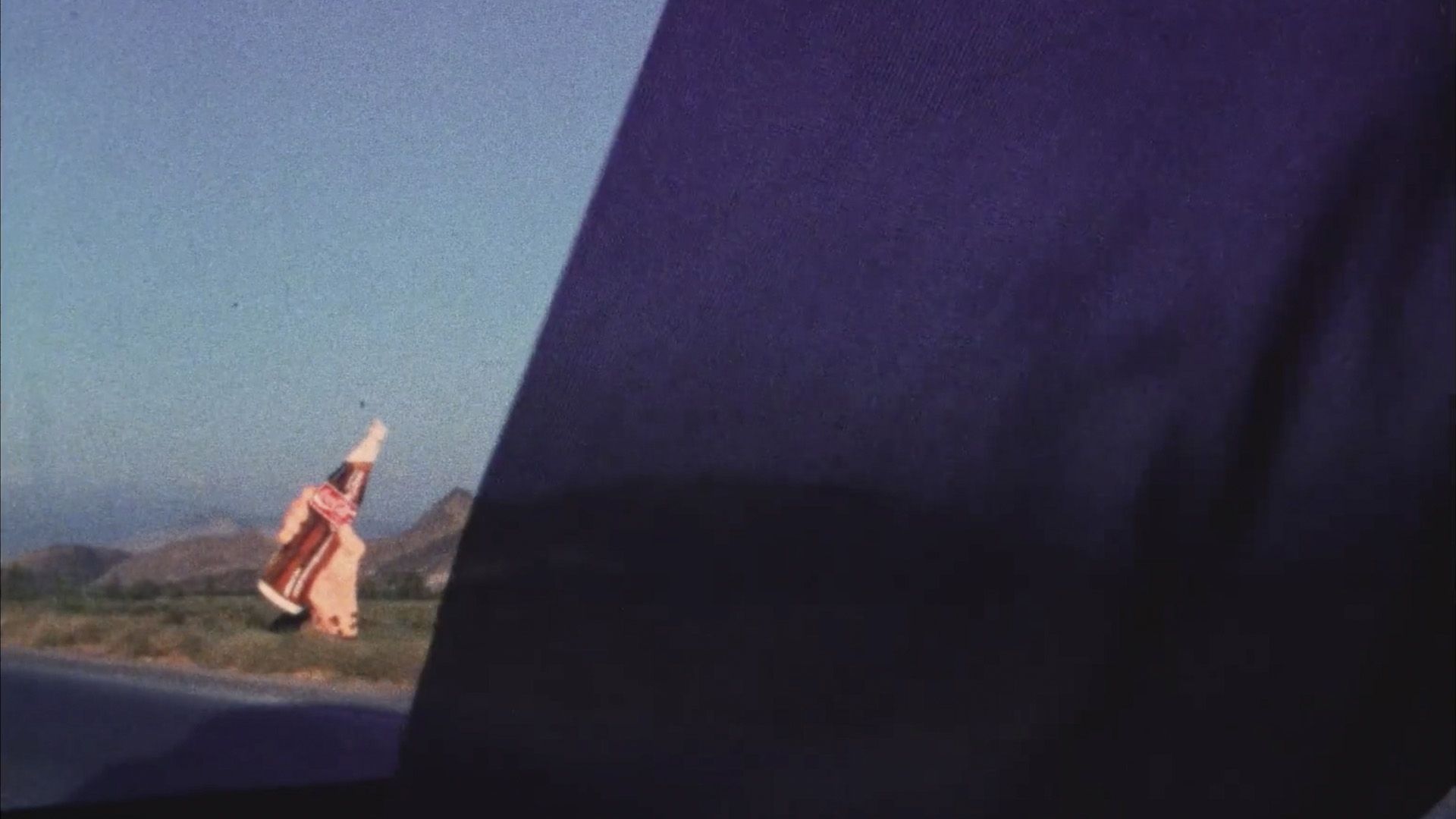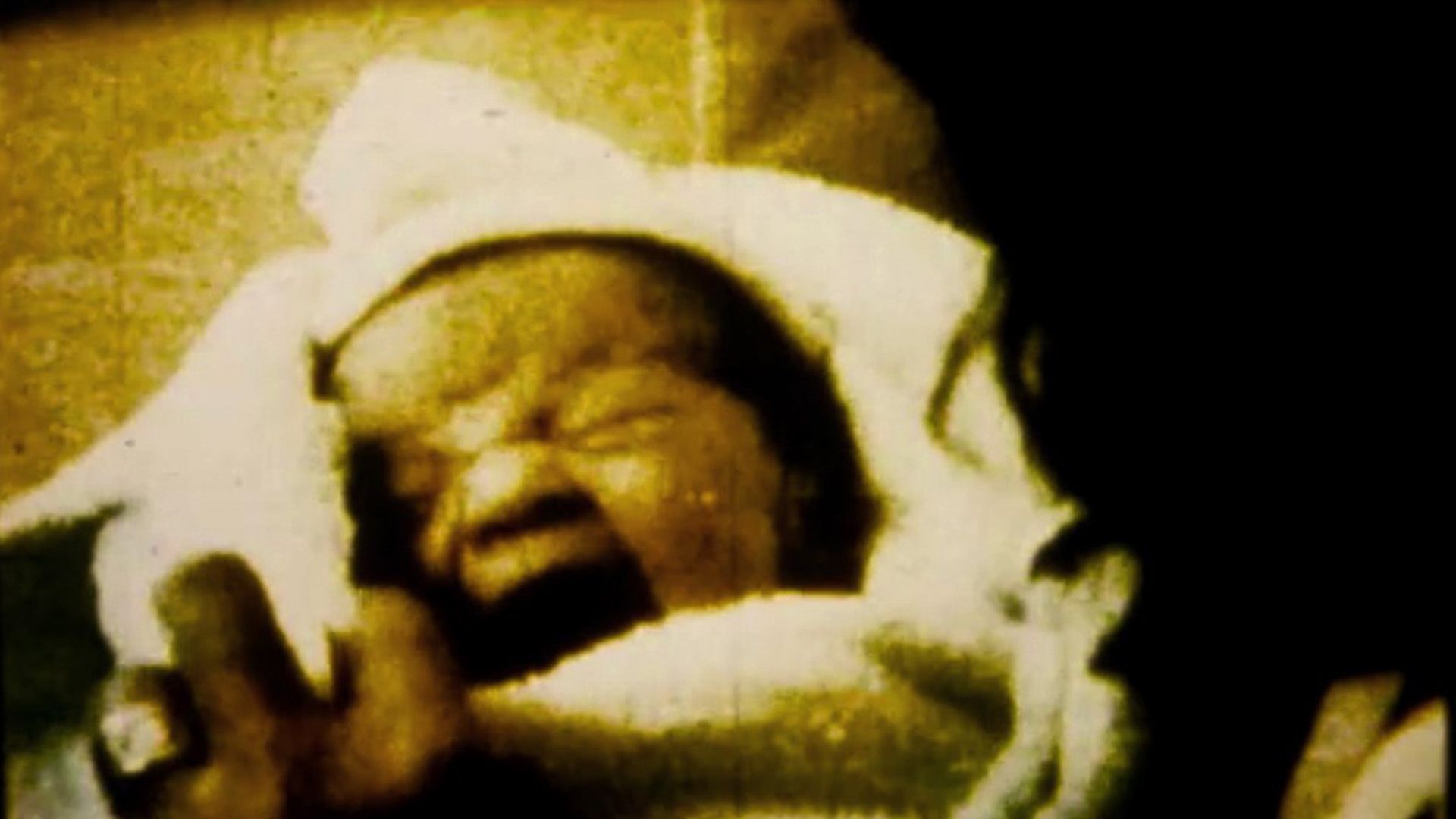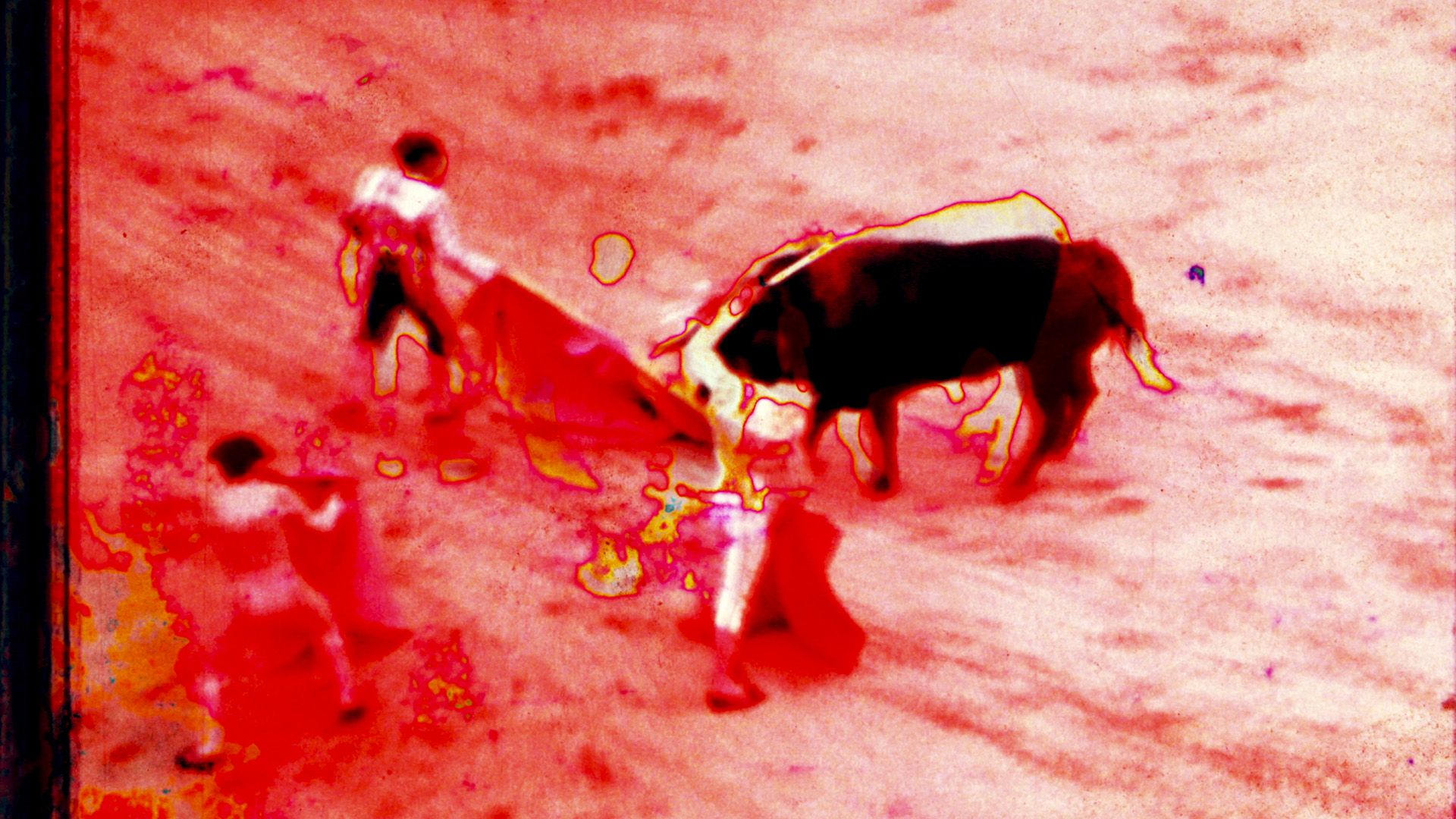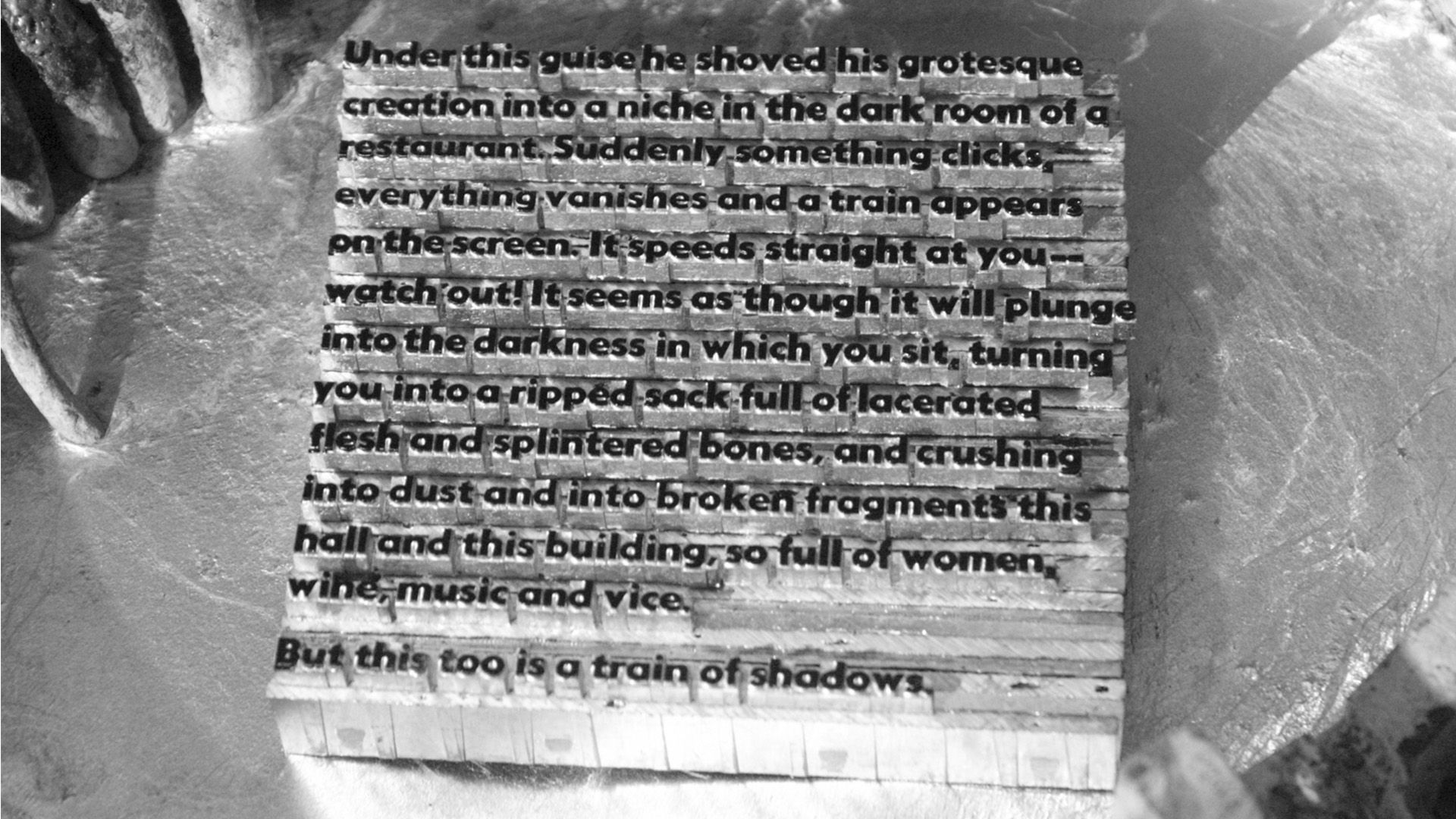FRANCI DURÁN
PROGRAMME
Sala (S8) Palexco | Sunday June 9th | 7:30 pm | Free entry to all venues until full capacity. It will not be possible to enter the venues after the screening has started

CUENTOS DE MI NIÑEZ (TALES FROM MY CHILDHOOD)
Franci Durán | 1991 | Canada | 16 mm | 9 min
The memories are sinister and morbid, of nightmares and suicide and dentists; the footage we see of snowy streets and a child playing and the seaside become foreboding. We learn how Francisca Duran escaped from Chile as a six-year old at the time of the bloody 1973 coup and how the death of democracy led to the death of innocence and truth.

BOY
Franci Durán | 1999-2005 | Canada | 16 mm | 6 min
What does it look like at the beginning? The first time he ever saw a table, the large foot of an adult stepping towards him, a window opening like a heart. Duran offers us rainy moments of Vancouver as an accompaniment to the birth of her first child. A slowly moving hail of abstract night lights precedes a slow motion birth, recoloured and rephotographed from a TV screen. The artist’s voice offers up a series of dates along with the facts that accompany them, her son’s favourite book, animal and word (No). Each instance of looking arrives in fragments, there is no story to pull it all together, unless it is the story of memory itself, with its necessary omissions, its shorn away pieces and left-overs. The formal experimentalisms and material fetishes that inform this movie appear here as an analogue for memory itself, an inheritance of seeing in the dark. It makes me wonder: is every film the mother of its audience? (Mike Hoolboom, Made in Canada: Projections of Beauty)

IT MATTERS WHAT
Franci Durán | 2019 | Canada | 16 mm to HD | 9 min
Absences and translations motivate this experimental animation in an exploration of the methods and materials of reproduction and inscription. The inquiry is set within a framework of practical and critical human relationships with other-than-human-species elucidated by the theorist Donna Haraway. A fragment from Haraway’s essay Tentacular Thinking: Anthropocene, Capitalocene, Chthulucene is reworked here as a poetic manifesto. Enigmatic found-footage calls into question human violence over animal species. Plant life is both the subject matter of the images and assists the means of photographic reproduction. The techniques used include in-camera animation, contact-prints and phytograms created by the exposure of 16mm film overlaid with plant material and dried for hours in direct sunlight. (Franci Durán)

TRAJE DE LUCES (RETRATO OFICIAL 5)
Franci Durán | 2018 | Canada | 16 mm to HD | 18 min
Suit of Lights is an experimental documentary composed with footage of a Spanish bullfight, that iconic imagery of highly decorated masculinity and violence masked as nationalism. The footage was drawn from Jacques Madvo Collection material filmed in Spain between 1976-1983. Madvo shot this footage at a time when Spain began its difficult and flawed transition to democracy in the years following dictator Francisco Franco’s death in 1975. The film consists of 16mm footage that has been decayed in soil, transformed by microbes and contact-printed and laboriously re-photographed and these abstractions of light and darkness ground the inquiry surrounding why citizens accept the harm done to others in their name.
Additional notes:
Suit of Lights is an experimental film that probes the commonalities of the Franco and Pinochet regimes. The film also addresses themes of inequality, human rights, ecology, animal rights, colonialism and the roots of fascism. I buried 16mm film of a bullfight and spectators. Because film emulsion is made with gelatin, an animal product, microbes in the soil consume the images leaving their time-marks. I then rephotographed the decayed film many times using contact and optical-printing techniques and handprocessed those results. The footage was then transferred and composited and assembled digitally. The tension between the graphic violence in the opening sequence and the materiality of the film imagery calls into question at what point we turn away or refuse to see the results of humans’ presumed mastery over our fellow citizens, other-than-human-species and the land.
The film is in English and Spanish with texts by Susan Sontag, Alice Miller and a poem by Claudio Duran (my father). (Franci Durán)

IN THE KINGDOM OF SHADOWS
Franci Durán | 2006 | Canada | 35 mm to HD | 6 min
In the Kingdom of Shadows documents a paragraph being typeset on an early twentieth-century Ludlow Linecaster. The text is taken from Maxim Gorky’s 1896 review of the Lumiere Brothers’ film Arrival of the Train at La Ciotat (1895). As the words melt into a pool of lead, the alchemical magic of printing is linked to that of cinema.

RESEARCH GARDEN: A COMPENDIUM OF LOST MOMENTS
Franci Durán | 2023 | Canada | 16 mm | 7 min
Full of lush shapes and vivid hues, this film loop was handcrafted using the techniques of phytography and optical printing. Raw visuals drawn from the artist’s garden over a period of two years bathe everything and everyone and confront us with silence. Vibrant leaf-prints, fingerprints, scratches and tape marks on celluloid work with the various phytographic offspring to evoke human entanglements with nature. With every touch of the hand or lamplight, these botanical image-traces are simultaneously illuminated and deteriorated.
(text by Lesley Loksi Chan from the curatorial notes from “Research garden: a compendium of lost moments”)
FRANCI DURÁN
ANTIDOTES AGAINST OBLIVION
Franci Durán, or Francisca Durán, migrated with her parents from Chile to Canada when she was just a child, fleeing the dictatorship of Augusto Pinochet. Here we can see a seed of her cinema, based on memory, and where the two sides of that moment in time cross paths: the fragile and emotional side that brings with it the “micro”, the personal, the individual story experienced through a more sensory than informed perspective; and the side brimming with rage and protest that brings with it the “macro”, in other words, history and its pending debts. Whether it is through the fragmented identity of a person who migrated at a young age, or through rigorous research, her cinema travels these paths with a certain poetic intention rooted in the tactile nature of the image.
The programme we dedicated to her in the 90s begins with two pieces focusing on the migratory experience from an emotional perspective. Cuentos de mi niñez (Tales from my childhood, 1991) is a recollection of the thoughts, anecdotes, dreams and fears of a girl trying to adapt to a new country. They are the stories we hear and the memories we have, which take on a more transcendent meaning when we are old enough to understand them in all their magnitude. Illustrated with evocative images of a present that calls for the past, Tales from my childhood is both beautiful and terrible. Boy (1999–2005) also arouses images of childhood, though not of one’s own but of Durán’s son, in a film in which physical work is introduced with the film and its possibilities. Boy begins with a heartbreaking, eloquent confession: “I have lived in four cities, and each one has claimed a part of me.” The experience of uprooting is conjured up by finding new anchors to the world, and working the images by handling, re-photographing and the use of an optical printer until they turn into something close to abstraction.
This work with the properties of analogue cinema intensifies in another of the programme’s blocks in which the focus on the personal shifts to the collective while not casting aside the fragmentary. Traje de Luces (Suit of Lights, Official Portrait 5, 2018) is a film is based on the invitation given to several artists to work on new artworks from the archive of Jacques Madvo, an Armenian documentary filmmaker who arrived in Canada in the 70s. With her films of bullfights in Spain between 1976 and 1983, Durán constructs Suit of lights, a film that is part of his Official Portrait series in which, using different single-channel or installation works, she appropriates images that she disassembles and reassembles, alluding in some way to the legacy of the Chilean dictator Augusto Pinochet. In this case it is about placing Pinochet face-to-face with Franco and verifying the similarities of fascist dictatorships in a film in which the essay style intersects with a photochemical work and the decay of the medium, and with various techniques that de-naturalize the colour and pervert the image. Throughout its footage, It Matters What (2019) repeats its leitmotif of the powerful image of a woman holding an owl with open wings. Durán subjects the fragment to various manipulations: deterioration, scratching and re-photographing, along with various interventions on the film strip, until we are completely immersed in the organic world of phytograms, images made with plants in direct contact with the celluloid. The film explores the relationships between what is human and animal based on the thought of Donna Haraway, and this essay-styled aspect of the film progresses in parallel to a formal and conceptual aspect that is increasingly closer to something organic.
This path of dissolution of cinema and a return to its very essence is crowned with two pieces: In the Kingdom of Shadows (2006) and Research garden: a compendium of lost moments (2023). In the former, a quote from Gorky serves to compare the exaggerated view of the invention of cinema with that of the printing press, the two being inventions that changed culture and the world. They are inventions, on the other hand, that serve to record and immortalize future memories; to leave an imprint. Finally, in the latter, Durán dedicates herself entirely to working with plants on the film strip. The organic and the mechanical (what we create ourselves) intermingle. Traces of the memory of the presence of plant species on earth leave their mark on the film. It is one more variant adopting memory in the hands of Durán, in a polymorphous compendium of antidotes against oblivion, perhaps the most dangerous disease threatening humanity.
Elena Duque
